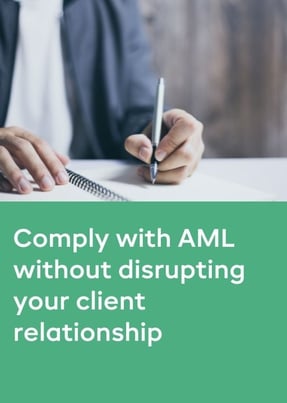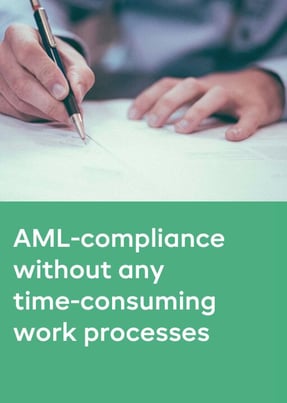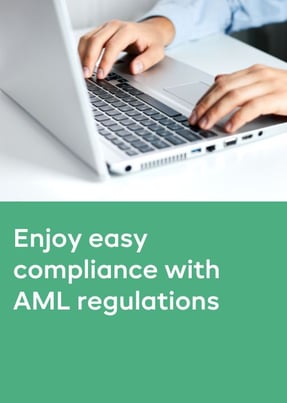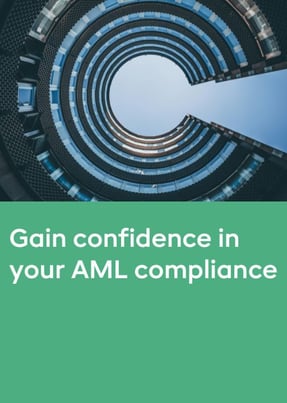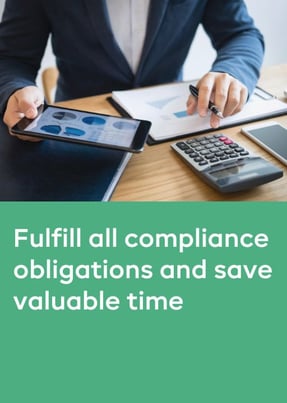- Products
- RegLab for ...
- Knowledge centre
Download the AML glossary >
 Discover the essential AML compliance terminology and gain instant access to a comprehensive guide
Discover the essential AML compliance terminology and gain instant access to a comprehensive guide - The company
Working at RegLab >
There may not be any vacancies that perfectly match your profile, but that does not mean there is no room for someone who can improve RegLab.
- Book a demo
Enhanced or regular client screening?
As a financial or legal service provider, such as lawyer, investment fund, notary or tax adviser, you need to conduct a client due diligence to know who you are doing business with. In fact, for Anti Money Laundering (AML), you are required to do research on your clients. We find that risk classification is the trickiest part of this. When do you conduct an enhanced or a regular client screening? In this article, we explain it.
Risk classification
A client due diligence should always be done to establish and verify the identity of the client. What this investigation looks like depends on the type of client, the business relationship and the client's risk level. In general, you always conduct a regular investigation first. You do this investigation before a business agreement is concluded and the service is provided. You record and store the client's identity and other data for five years.
In a client investigation, you look at the client's background, what you yourself will do for the client and how much risk there is of money laundering or terrorist financing. The client's risk profile then determines the type of investigation:
- Standard: regular client screening
- Low risk: simplified client screening
- High risk: enhanced client screening
Regular client screening
This type of investigation is the starting point for medium risk profiles. In a regular client investigation, you first verify and record the client's identity. When the client is a legal entity, you also determine the interested party - also known as UBO. The UBO is the person who is the ultimate owner of the legal entity and has actual authority over it. When someone has more than 25% of the shares or voting rights, there is a UBO.
As an organisation, you need to know what the purpose of the business relationship is. This should also be established and recorded. This is particularly important because ongoing checks must also take place in the meantime. In some cases, the source of funds may also be investigated. In that case, the source of funds used in the business relationship or transaction will be examined.
It is also important to establish and verify the identity of the natural person representing the client. Once everything is checked and agreed, the client due diligence can be concluded.
In some cases, regular customer due diligence may not be enough. Then you will have to carry out an enhanced investigation.
Enhanced client screening
When regular customer due diligence is not sufficient, an enhanced customer due diligence must be carried out. An enhanced due diligence is carried out when an increased risk of money laundering or terrorist financing is present. This depends on the following requirements:
- Prior to the investigation, an increased risk of money laundering or terrorist financing is suspected.
- When the client or UBO is a PEP.
- If there are complex and unusually large transactions or patterns of transactions, with no clear economic or lawful purpose.
- If the European Commission (EC) has designated the state where the client resides, is based or domiciled as a higher-risk state.
In addition to the above requirements, as an organisation you also need to consider certain risk factors. These risk factors can be different in each country, but they are mainly client-related risk factors (product-, service-, transaction-, geographical-, or delivery channel-related risk factors).
💡Enhanced customer due diligence is only required for customers who can be classified as high-risk. Enhanced customer due diligence is basically the process of further investigating the client's reputation and background after verifying its identity. This step is designed to protect the company from unknowingly doing business with a person or entity that poses a high risk of money laundering or is more vulnerable to corruption.
Simplified client screening
When the risk of money laundering or terrorist financing is low, a simplified customer due diligence may be sufficient. However, this does depend on the circumstances applicable within your own customer due diligence and may vary from case to case. The institution must therefore collect sufficient data to determine whether a simplified customer due diligence can be conducted. You also need to take into account the risk factors. There are certain client groups for which a simplified customer due diligence is sufficient, for example:
- Listed companies where the UBO is known
- Governments
- Public enterprises/institutions
The reason for this is that these types of organisations are already under such supervision and thus the risk of money laundering is significantly low.
What do you write down for each type of research? Case studies
You must justify the choice of type of research. Here are a few examples:
- Simplified investigation
‘’Client is wholly owned subsidiary of a US listed company. The stock exchange is SEC regulated. Therefore, no UBO is raised and a simplified examination is appropriate.‘’
- Regular investigation
‘’There is no reason to conduct simplified/strengthened investigations.‘’
- Enhanced investigation
‘’Client is located in a high-risk country and has an international structure. The reason for building the complex shareholder structure is known and plausible. A heightened investigation is therefore deemed appropriate.‘’
Themed file: fully prepared for the supervisor’s audit
This article is part of a number of articles and downloads that will help you prepare yourself for the supervisor’s visit. Do you want to be 100% AML-proof and ready for the supervisor’s visit? Find all FAQs in our Knowledge Centre.
